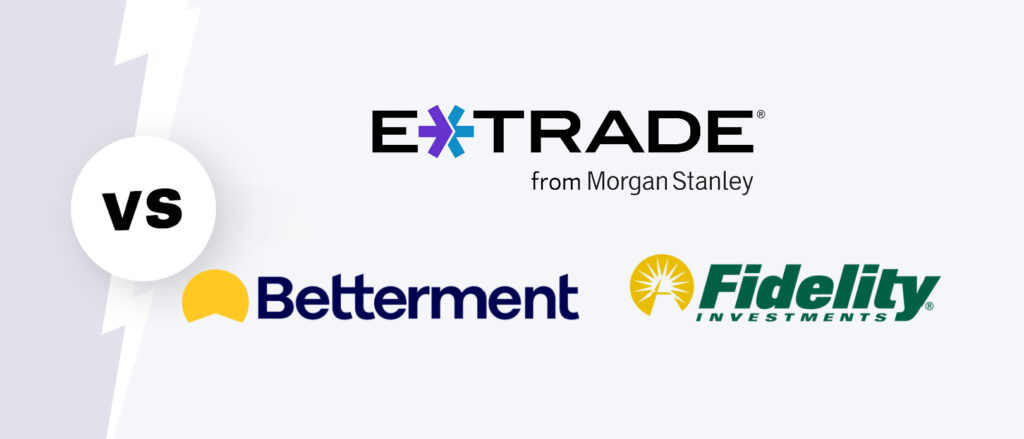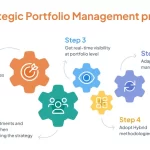Investment tools are software applications, platforms, or services designed to assist investors in managing their portfolios, analyzing market data, executing trades, and making informed investment decisions. These tools have become increasingly important in the modern financial landscape, where real-time information, advanced analytics, and efficient trade execution are crucial for success.
The primary purpose of investment tools is to streamline the investment process, providing investors with a comprehensive set of features and functionalities to navigate the complex world of financial markets. They offer access to real-time market data, charting tools, research resources, and trading platforms, empowering investors to make data-driven decisions and execute trades with ease.
Investment tools play a vital role in enhancing investor confidence and decision-making capabilities. By providing access to a wealth of information and analytical tools, they enable investors to conduct in-depth research, identify potential opportunities, and manage risk more effectively. Additionally, these tools often incorporate advanced algorithms and analytical models, enabling investors to backtest strategies, optimize portfolios, and gain valuable insights into market trends and patterns.
Moreover, investment tools have revolutionized the way investors interact with financial markets. Many platforms offer mobile applications, allowing investors to monitor their portfolios and execute trades on-the-go, ensuring they never miss an opportunity. The integration of social features and community forums further enhances the investment experience, enabling investors to share insights, discuss strategies, and learn from one another.
Table of Contents
Binance

Binance is a leading cryptocurrency exchange platform that caters to both novice and experienced traders. Launched in 2017, it has quickly become one of the most popular and trusted names in the crypto world, known for its user-friendly interface, robust security measures, and a wide range of trading options.
The Binance trading platform offers a sleek and intuitive design, making it easy for users to navigate and execute trades. It supports a vast array of cryptocurrencies, including Bitcoin, Ethereum, and numerous altcoins, providing traders with ample opportunities for diversification and exploration.
One of Binance’s standout features is its advanced trading tools and charting capabilities. Traders can access real-time market data, conduct technical analysis, and utilize various order types, such as limit, market, and stop-loss orders. Additionally, the platform offers margin trading and futures trading, catering to more experienced and risk-tolerant investors.
Binance’s target audience encompasses a broad spectrum of traders, from beginners seeking a user-friendly entry point to seasoned professionals seeking advanced trading tools and liquidity. The platform’s educational resources, including guides, tutorials, and a dedicated academy, make it accessible to those new to the cryptocurrency space.
Moreover, Binance places a strong emphasis on security, implementing industry-leading measures to protect user funds and personal information. This includes two-factor authentication, cold storage for the majority of assets, and rigorous verification processes to combat fraud and money laundering.
Betterment: Robo-Advisor for Smart Investing
Betterment is a leading robo-advisor platform that aims to simplify the investment process for individual investors. With its user-friendly interface and automated portfolio management, Betterment takes the guesswork out of investing, making it accessible to both novice and experienced investors.
At the core of Betterment‘s offering is its proprietary algorithm that builds and manages diversified portfolios based on each investor’s risk tolerance, investment goals, and time horizon. The platform employs modern portfolio theory and invests in a range of low-cost exchange-traded funds (ETFs) across various asset classes, including stocks, bonds, and alternative investments.
One of the key advantages of Betterment is its goal-based investing approach. Investors can set specific financial goals, such as retirement planning, saving for a down payment, or building an emergency fund, and Betterment will tailor the investment strategy accordingly. This personalized approach ensures that the portfolio is aligned with the investor’s unique objectives.
Betterment’s user experience is designed to be intuitive and straightforward. The platform’s clean and modern interface provides a clear overview of portfolio performance, asset allocation, and projected returns. Investors can easily track their progress, make adjustments, and stay informed about their investments through regular updates and educational resources.
In addition to its core investment management services, Betterment offers a range of features and tools to enhance the investing experience. These include automatic rebalancing, tax-loss harvesting, and the ability to sync external accounts for a comprehensive financial overview. Betterment also provides access to licensed financial advisors for personalized guidance and advice.
Overall, Betterment stands out as a user-friendly and cost-effective robo-advisor platform that empowers investors to build and manage their portfolios with ease, leveraging the power of technology and algorithmic investing strategies.

TDAmeritrade’s thinkorswim
TDAmeritrade’s thinkorswim is a powerful trading platform designed for active traders and investors. It offers a comprehensive suite of tools and features that cater to various trading styles and investment strategies.
One of the standout features of thinkorswim is its advanced charting capabilities. The platform provides a wide range of customizable charts, including candlestick, bar, line, and more. Users can overlay multiple technical indicators, drawing tools, and studies to identify potential trading opportunities. Additionally, thinkorswim offers real-time streaming data, ensuring traders have access to up-to-date market information.
Thinkorswim’s charting tools are highly versatile, allowing traders to analyze various asset classes, including stocks, options, futures, and forex. The platform also incorporates sophisticated tools like the “thinkScript” programming language, which enables users to create custom studies and indicators tailored to their specific trading strategies.
In addition to its powerful charting capabilities, thinkorswim offers a comprehensive suite of trading tools. Users can access real-time quotes, news, and research reports, as well as advanced order entry and management tools. The platform also supports options trading, with tools for analyzing and executing complex options strategies.
Thinkorswim is not just a trading platform; it also serves as an educational resource for traders of all levels. The platform offers a vast library of educational materials, including video tutorials, webinars, and interactive courses. These resources cover a wide range of topics, from basic trading concepts to advanced strategies, helping traders enhance their knowledge and skills.
Furthermore, thinkorswim provides access to a vibrant trading community, where users can share ideas, strategies, and insights. This community aspect can be invaluable for traders seeking to learn from experienced professionals and stay up-to-date with market trends and developments.
Fidelity Mobile
Fidelity Mobile is a powerful investment app that provides investors with a comprehensive suite of tools and features for managing their portfolios on-the-go. The app offers a user-friendly interface that makes it easy to monitor and trade stocks, ETFs, mutual funds, and other securities.
One of the standout features of Fidelity Mobile is its robust account management capabilities. Users can view real-time account balances, holdings, and transaction history, as well as transfer funds between accounts and set up recurring transfers. The app also supports mobile check deposit, making it convenient to add funds to your account from anywhere.
For traders, Fidelity Mobile offers advanced charting tools and real-time streaming quotes, enabling users to stay on top of market movements and make informed trading decisions. The app’s research capabilities are equally impressive, with access to analyst reports, market news, and educational resources to help investors stay informed and make data-driven investment choices.
Fidelity Mobile also offers a range of personalization options, allowing users to customize their experience by setting up watchlists, alerts, and notifications based on their investment preferences and goals. The app integrates seamlessly with Fidelity’s desktop and web platforms, ensuring a consistent experience across devices.
Overall, Fidelity Mobile is a powerful and comprehensive investment app that caters to the needs of both novice and experienced investors. With its intuitive design, robust features, and commitment to providing high-quality research and education, it is an excellent choice for those looking to manage their investments on-the-go.
E*TRADE from Morgan Stanley
E*TRADE, now owned by Morgan Stanley, is a leading online brokerage platform that offers a comprehensive suite of investment tools for traders and investors of all levels. Their flagship platform, Power E*TRADE, provides a robust trading experience with advanced charting, real-time data, and a wide range of order types.
One of the standout features of E*TRADE is its extensive research capabilities. The platform offers in-depth analysis and commentary from industry experts, covering stocks, ETFs, mutual funds, and other investment vehicles. Additionally, E*TRADE provides access to third-party research from renowned firms, ensuring that investors have access to a wealth of information to inform their trading decisions.
For those new to investing or seeking to enhance their knowledge, E*TRADE offers a comprehensive education center. This resource includes interactive courses, webinars, and video tutorials covering a wide range of topics, from basic investing concepts to advanced trading strategies. The education center is designed to empower investors with the knowledge and skills they need to navigate the financial markets with confidence.
Overall, E*TRADE from Morgan Stanley is a powerful investment tool that caters to both seasoned traders and newcomers alike. With its advanced trading platforms, robust research capabilities, and comprehensive educational resources, E*TRADE positions itself as a one-stop-shop for all your investment needs.
Choosing the Right Investment Tool
Selecting the appropriate investment tool is crucial for achieving your financial goals and maximizing returns while minimizing risks. Several factors should be considered when choosing an investment platform, including your investing goals, experience level, and the types of assets you wish to invest in.
Your investing goals play a pivotal role in determining the right investment tool. Are you seeking long-term growth for retirement planning, or do you prefer short-term trading opportunities? Different tools cater to diverse investment strategies, and aligning your goals with the platform’s capabilities is essential.
Experience level is another important consideration. Beginner investors may benefit from user-friendly platforms with educational resources and simplified interfaces, while experienced traders may prefer advanced tools with comprehensive charting, analysis, and customization options.
The types of assets you wish to invest in should also guide your choice of investment tool. Some platforms specialize in specific asset classes, such as stocks, bonds, cryptocurrencies, or forex, while others offer a broader range of investment options. Ensure that the tool you select supports the assets you intend to trade or invest in.
Additionally, consider factors like fees and pricing structures, security measures, customer support, and integration with other financial tools or services. Evaluating these aspects will help you make an informed decision and select an investment tool that aligns with your unique needs and preferences.
Fees and Pricing Comparison
Investment tools often vary significantly in their pricing structures, account minimums, and transaction fees. It’s crucial to carefully evaluate these costs to ensure you’re getting the best value for your investment needs.
Binance, a popular cryptocurrency exchange, offers a relatively low fee structure, with trading fees ranging from 0.1% to 0.075% for spot trading and 0.02% for futures trading. However, there are additional fees for withdrawals and other services. The platform has no account minimum.
Betterment, a robo-advisor, charges an annual fee of 0.25% for their digital plan and 0.40% for their premium plan, which includes access to human advisors. There is no account minimum for the digital plan, but a $100,000 minimum for the premium plan.
TDAmeritrade’s thinkorswim platform is designed for active traders and offers a range of pricing options. For stock and ETF trades, the commission is $0 per trade, while options trades have a $0.65 fee per contract. There is no account minimum, but certain features and services may have additional fees.
Fidelity Mobile is a mobile app offered by Fidelity Investments, which has a wide range of investment products and services. For most trades, including stocks, ETFs, and options, there are no commissions or fees. However, there may be other fees associated with specific investment products or services.
E*TRADE from Morgan Stanley offers a range of pricing options, including a flat-fee pricing structure for active traders and a commission-based pricing structure for occasional traders. Stock and ETF trades start at $0 per trade, while options trades have a $0.65 fee per contract. There is no account minimum for most account types.
It’s important to carefully review the pricing details for each platform, as well as any additional fees or account minimums, to ensure you’re selecting the most cost-effective option for your investment strategy and portfolio size.
Security and Regulatory Compliance
When it comes to investment tools, security and regulatory compliance are of paramount importance. These platforms handle sensitive financial data and transactions, making it crucial to implement robust security measures and adhere to strict regulations.
All reputable investment tools employ advanced encryption protocols to protect user data during transmission and storage. They also implement multi-factor authentication, biometric logins, and other security measures to safeguard user accounts from unauthorized access. Regular security audits and penetration testing are conducted to identify and address any potential vulnerabilities.
Regulatory compliance is another critical aspect that investment tools prioritize. They must comply with various regulations and guidelines set forth by governing bodies such as the Securities and Exchange Commission (SEC), the Financial Industry Regulatory Authority (FINRA), and other relevant authorities. These regulations cover areas like data privacy, anti-money laundering (AML), know-your-customer (KYC) protocols, and fair trading practices.
Investment tools also have robust internal controls and compliance programs in place to ensure adherence to these regulations. They employ teams of compliance professionals who monitor and assess the platform’s operations, policies, and procedures to maintain regulatory compliance.
Furthermore, many investment tools undergo regular third-party audits and obtain certifications such as SOC 2 or ISO 27001, which attest to their commitment to data security and privacy standards.
By prioritizing security and regulatory compliance, investment tools aim to provide users with a safe and trustworthy environment for managing their investments and financial assets.
Integrations and Third-Party Tools
Many investment tools offer integrations with popular accounting software, customer relationship management (CRM) systems, and other third-party tools to streamline workflows and enhance functionality. These integrations allow users to seamlessly sync data between platforms, automate processes, and access a wide range of additional features and capabilities.
For example, some investment tools integrate with accounting software like QuickBooks or Xero, enabling users to automatically import transaction data, reconcile accounts, and generate financial reports. This eliminates the need for manual data entry and ensures accurate and up-to-date financial records.
CRM integrations are also common, allowing investment professionals to manage client relationships, track interactions, and access client data directly from within the investment tool. This can improve client communication, streamline operations, and provide a more personalized experience.
Additionally, many investment tools offer open APIs (Application Programming Interfaces) or integration marketplaces, allowing developers and third-party providers to create custom integrations and extensions. This opens up a world of possibilities, enabling users to tailor the investment tool to their specific needs and workflows.
Integrations with portfolio management software, risk analysis tools, and research platforms are also available, providing investors with a comprehensive suite of tools to make informed decisions and manage their investments effectively.
Overall, integrations and third-party tools can significantly enhance the functionality and usability of investment platforms, enabling users to work more efficiently, access additional features, and streamline their investment processes.
Customer Support and Education
One of the most critical factors in choosing an investment tool is the quality of customer support and educational resources provided. Investors, especially those new to the market, often have questions or need guidance navigating the platform’s features and making informed decisions.
Top investment tools offer various customer support channels, including phone, email, live chat, and knowledge bases. The responsiveness and expertise of the support team can make a significant difference in resolving issues promptly and ensuring a smooth user experience.
In addition to reactive support, many investment tools provide proactive educational resources to help users enhance their knowledge and skills. These may include video tutorials, webinars, articles, and even in-person seminars or workshops. Well-designed educational materials can empower users to better understand market dynamics, investment strategies, and risk management principles.
Furthermore, some investment platforms foster vibrant online communities where users can interact, share insights, and learn from one another. These forums can be invaluable for networking, discussing investment ideas, and gaining diverse perspectives from experienced traders and investors.
When evaluating customer support and education offerings, it’s essential to consider the depth and breadth of resources available, the accessibility of support channels, and the overall commitment to user empowerment and knowledge-sharing. A platform that prioritizes customer education and support can significantly enhance the investment experience and contribute to long-term success.
Future Trends and Innovations
The world of investment tools is rapidly evolving, driven by technological advancements and changing user demands. One of the most exciting trends is the integration of artificial intelligence (AI) and machine learning algorithms. These technologies have the potential to revolutionize the way investors analyze data, make decisions, and manage their portfolios.
AI-powered investment tools can process vast amounts of data, including financial reports, market trends, and economic indicators, to provide real-time insights and recommendations. This can help investors identify profitable opportunities and mitigate risks more effectively. Additionally, AI can personalize investment strategies based on individual preferences, risk tolerance, and financial goals.
Another emerging trend is the use of natural language processing (NLP) and conversational interfaces. These technologies enable investors to interact with investment tools using voice commands or natural language queries, making the process more intuitive and accessible. Imagine being able to ask your investment app questions like “How is my portfolio performing compared to the S&P 500?” or “What are the risks associated with investing in this particular stock?”
Furthermore, the integration of virtual and augmented reality (VR/AR) technologies could revolutionize the way investors visualize and interact with financial data. Imagine being able to immerse yourself in a 3D representation of your portfolio, where you can explore different scenarios and visualize the impact of various investment decisions.
Blockchain technology and decentralized finance (DeFi) are also gaining traction in the investment world. These technologies have the potential to create more transparent, secure, and efficient financial systems, enabling investors to access new asset classes and investment opportunities.
As technology continues to evolve, we can expect investment tools to become more sophisticated, personalized, and user-friendly. The future of investment tools lies in seamless integration of cutting-edge technologies, empowering investors with powerful insights and enabling them to make informed decisions with ease.



